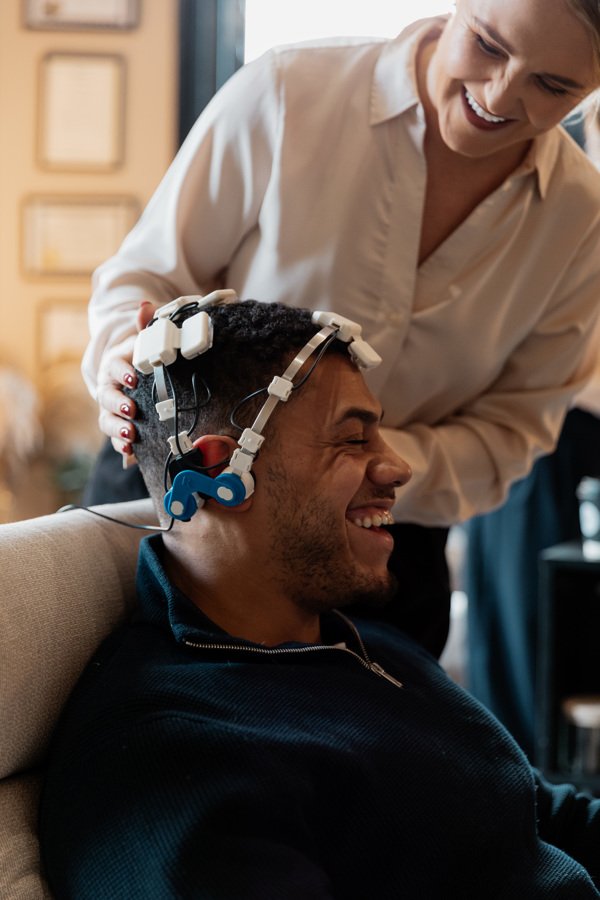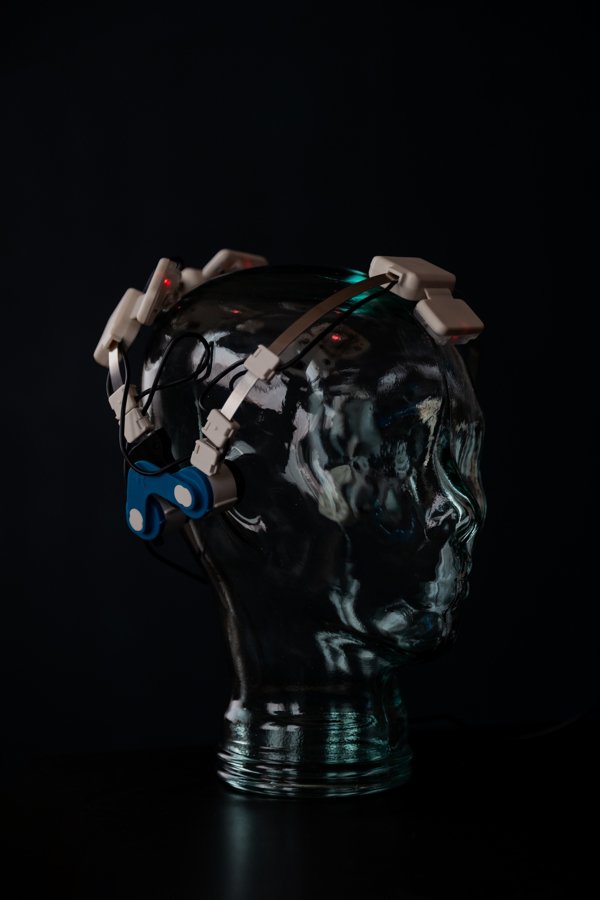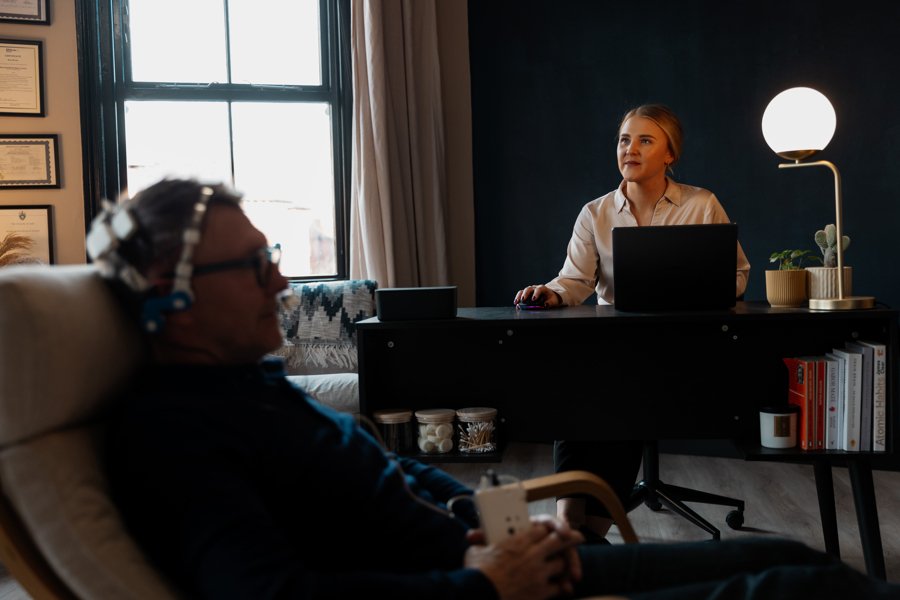
The power of light
Brain Photobiomodulation involves the application of low-level light therapy through a wearable headset. The device we use is made of LEDs, which deliver non-invasive, low-intensity and non-thermal near-infrared light to the brain.
Photobiomodulation has been widely used in cosmetics (scar reduction, wrinkle reduction) due to its positive effect on cell repair and regeneration. As technology has advanced, researchers have created cutting-edge devices that allow us to apply near-infrared light to the brain to support cognitive and emotional functions.
How does photobiomodulation support brain health?
Photobiomodulation helps to heal damaged brain cells, improve cerebral blood circulation, and reduces inflammation and toxicity. The near-infrared light energy delivered to the brain enhances efficiency and performance due to better signalling and repaired connectivity between the neurons. This can support cognitive functions such as memory, attention and executive functions and improving mood and emotional regulation.

How does it work?
The brain is the most important and complex human organ. Within every brain cell are mitochondria, which are best understood as energy-producing "powerhouses" or "batteries". Through biochemical reactions, the mitochondria create fuel for brain cells.
Your brain's mitochondrial performance can be improved by absorbing light energy (photons) of specific wavelengths. Scientific research shows that our brain's mitochondria respond positively to light energy within the NIR wavelength range.
When NIR energy is delivered to neuronal mitochondria, it is absorbed by a light-sensitive enzyme called cytochrome c oxidase. This enzyme uses NIR energy to start a series of biochemical reactions that are beneficial and energising to the neurons and other brain cells.
There are three bioenergetics pathways involved in photobiomodulation;
01 Low-level visible red to near-infrared light (NIR) energy is absorbed by mitochondria and converted into ATP for cellular use. ATP is the primary energy currency of cells and plays a crucial role in various cellular processes.
02 The process creates mild oxidants known as reactive oxygen species (ROS) which lead to gene transcription, cellular repair, and healing. ROS are essential for cell signalling, growth and function.
03 The process also unclogs the chain clogged by nitric oxide (NO). The nitric oxide is then released back into the system. Nitric oxide is a molecule our body produces to help its 50 trillion cells communicate. Additionally, nitric oxide helps to dilate the blood vessels and improve blood circulation. Improved blood flow can enhance oxygenation and nutrient delivery to brain tissues, promoting better neuronal health.





OUr PRICES
We offer all clients a free initial consultation and from there we provide differently prices packages depending on the service you require.








